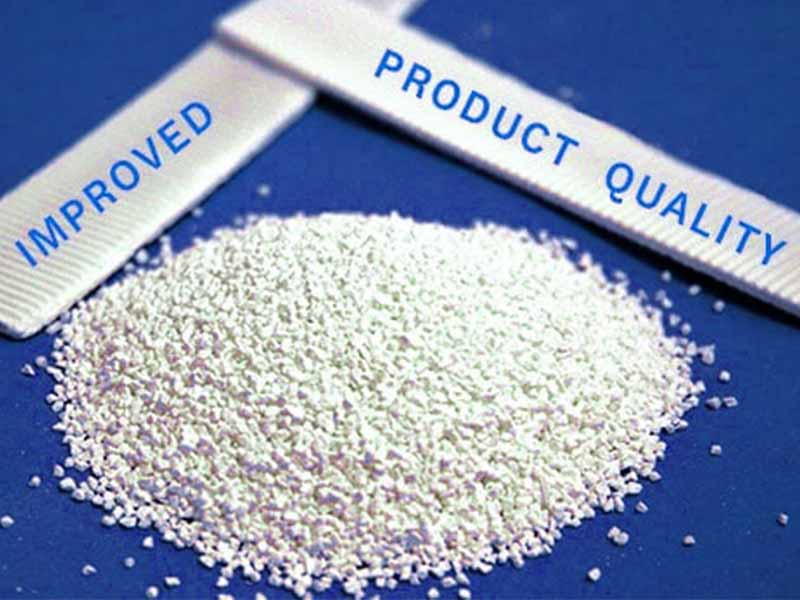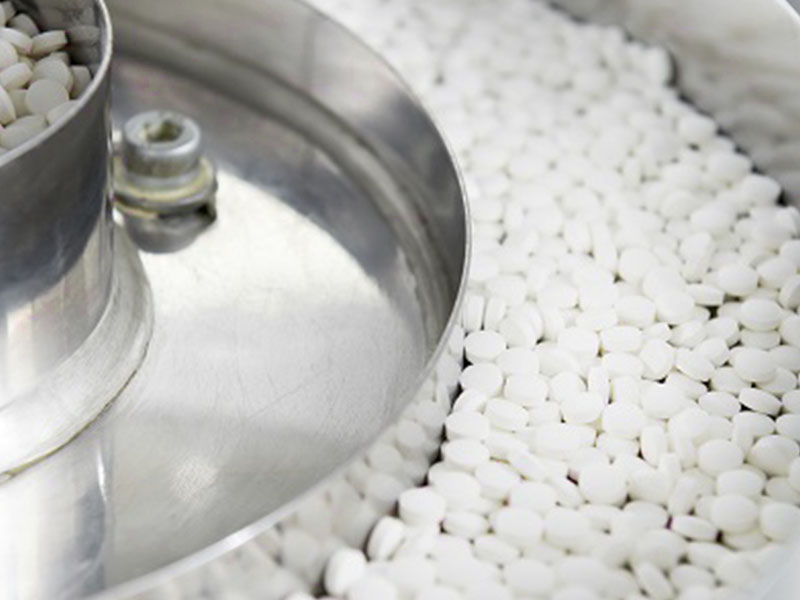Dry granulation, also known as precompression or twofold compression, is a procedure for increasing particle size that is intended to enhance the flow and compression properties of powders that would not otherwise be appropriate for compression. Powder particles are compressed into bulky compacts, which are then broken down into smaller granules to create granules that can be used to create dosage forms later on.
The dry granulation method for making tablets reduces several unit processes, but it still requires grinding or micronizing pharmaceuticals as well as weighing, mixing, slugging, dry screening, lubricating, and compressing granules into tablets.
Either the active component or the diluent needs to have adequate intrinsic binding or cohesive characteristics for the dry granulation method of making tablets to be successful.

Roller compaction or slugging could be used to obtain dry granulation. Except for one significant advancement known as pneumatic dry granulation technology, the dry granulation process and technology have not advanced as much as wet granulation in contrast.
Slugging method
During this procedure, basic powder particles are compressed into sizable flat tablets or pallets utilizing a tablet press or, more frequently, a sizable, powerful rotary press. The final step is to mill the resulting compact using a hammer mill or another piece of standard milling machinery. The milled slugs are sized by passing them through a screen with the specified mesh size. The standard amount of lubricant is added, and the granules are compacted into tablets.
Slugging produces a lot of dust, which makes it difficult to confine the process and prevent cross-contamination. Batch processing, low throughput, poor process control, frequent maintenance changeovers, and poor economy of scale are some additional major drawbacks of slugging. The better and more advanced roller compaction procedure is replacing the old one.
Roller compaction
Dry granulation with roller compaction is more straightforward, more effective, and less expensive than other methods (such as ribbon blending). The components for the formulation are continually transferred between two counter-rotating rollers, where they are densified and consolidated into a sheet of solid mass. The feed material may be crushed into dense flakes (smooth rolls), also known as dense ribbon-like materials, or dense briquettes (almond or stick-shaped), depending on the type of rollers being utilized. The materials are further crushed into tablets after being milled, sized, lubricated, and compressed.
For formulation constituents that are susceptible to moisture, solvents, or heat, roller compaction is clearly superior to wet granulation. It is a desirable granulation alternative in the pharmaceutical sector because it provides significant cost savings thanks to its high production volume (up to 100,000 kg/hr), low cycle periods, and minimal processing stages. In addition, removing a drying stage speeds up scale-up and cuts down on production and development time.
Below is a list of the numerous steps involved in making tablets using the dry granulation method.
- Weighing the components of a formulation
- Ingredients in a formulation are blended
- slugs are created by compressing mixed particles.
- Grinding and sieving slugs
- combining with a lubricant and disintegrant
- Granules are compressed into tablets.
The benefits of dry granulationin manufacturing tablets
- Dry granulation needs the least amount of equipment and floor space.
- The procedure prevents the addition of moisture and permits the dry handling of formulation constituents that are sensitive to moisture.
- Since there is no drying step in the process, it is appropriate for materials that are sensitive to heat.
- During the formulation process, dry granulation is typically not linked to changes in drug morphology.
- The method uses excipients of the ordinary grades and does not call for any unique excipients.
- Due to the dry binder’s reduced adhesive effect and faster disintegration, tablets made using the dry granulation process have enhanced disintegration times.
- It is simple to scale up the procedure from development to production.
- Considering that there is no migration, it enhances blending.
Negative impact of dry granulation in tablet manufacturing
- The dry granulation method (roller compaction) necessitates the use of specialized heavy duty equipment.
- The operation produces a lot of dust, which could lead to cross-contamination.
- Following mixing, components may separate.
- There can be problems with powder flow.
- Due to their softer consistency compared to wet granulation tablets, dry granulation tablets are more challenging to prepare utilizing post-tabletting procedures, such as film coating.
Conclusion
Since direct compression took over as the preferred method for producing tablets, dry granulation has become less common. Slugging and roller compaction are still used in the production of tablets, nevertheless. Although roller compaction is more straightforward to use than wet granulation techniques, it has not yet been properly analyzed or investigated.
Why choosing Senieer?
Senieer, a top supplier and manufacturer of pharmaceutical equipment worldwide, provides ONE STOP SOLUTION. For companies in the pharmaceutical, food, chemical, and cosmetics industries, Senieer is the best global partner. In China, Senieer has spent more than 34 years concentrating mostly on solid dosage forms. Integral process solutions that are trustworthy. We manufacture equipment in accordance with international standards including GMP, cGMP, and US FDA.
Senieer can customize and provide dry and wet granulation machines for your business.

The one-stop solution services for complete projects, from advising to design, are improved by members of the Senieer technical team. We completely meet your demands and methods for resolving all of your problems.
We are the best GRANULATION LINE manufacturers in China.
For more information you can check our website: www.senieer.com










